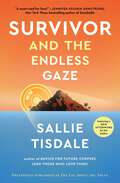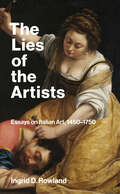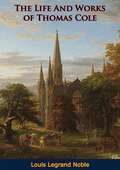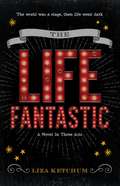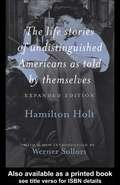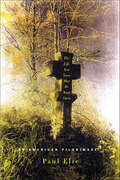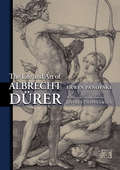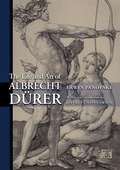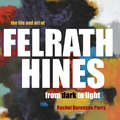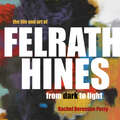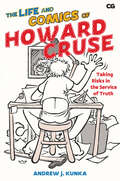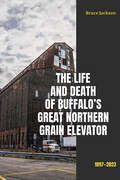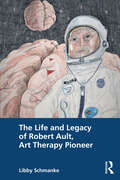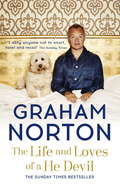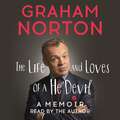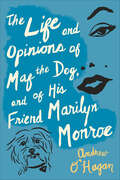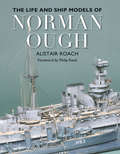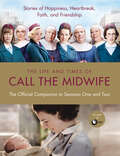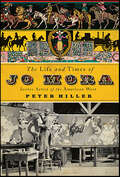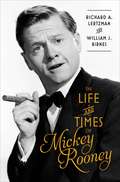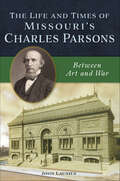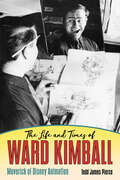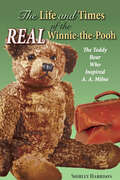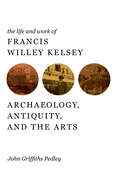- Table View
- List View
The Lie About the Truck: Survivor, Reality TV, and the Endless Gaze
by Sallie TisdaleThe author of the acclaimed Advice for Future Corpses (and Those Who Love Them) brings &“her singular sensibility, her genius for language, her love of our deeply imperfect world&” (Karen Karbo, author of In Praise of Difficult Women) to this insightful exploration of reality TV and the shifting definitions of truth in America.What is the truth? In a world of fake news and rampant conspiracy theories, the nature of truth has increasingly blurry borders. In this clever and timely cultural commentary, award-winning author Sallie Tisdale tackles this issue by framing it in a familiar way—reality TV, particularly the long-running CBS show Survivor. With humor and in-depth superfan analysis, Tisdale explores the distinction between suspended disbelief and true authenticity both in how we watch shows like Survivor, and in how we perceive the world around us. With her &“bold and wise, galvanizing and grounding&” (Chloe Caldwell, author of I&’ll Tell You in Person) writing, Tisdale has created an unputdownable, thoroughly entertaining, and groundbreaking book that we will be talking about for years to come.
The Lies of the Artists: Essays on Italian Art, 1450-1750
by Ingrid D. RowlandLuminous essays on artists of the Italian Renaissance by one of our most inspired writers on the history and making of art.In the three centuries from 1450 to 1750 painters, sculptors, and architects emerged from the medieval craft guilds of Italy to claim a new social status as creators, whose gorgeous handiwork, now called “art,” expressed lofty inspiration as much as manual skill. In The Lies of the Artists, Ingrid Rowland takes us into the world of these artists, and into their seemingly miraculous ways of transforming transcendent ideas into tangible works of art that challenged and redefined reality, “lies” with the power to reveal a deeper truth. As the great art patron Daniele Barbaro wrote: “bisogna aprire gli occhi,” or “you have to open your eyes.” And this is precisely what Rowland does in these essays, bringing her knowledge, keen perception, and singular wit to bear on the art and lives of Renaissance masters, including Michelangelo, Caravaggio, Bernini, Raphael, Titian, and El Greco, as well as some overlooked artists of phenomenal talent, such as Antonello da Messina, Andrea del Sarto, and Bertoldo di Giovanni. In dazzling prose, as luminous and versatile as the painterly effects she describes, she shows us the work of these artists in eye-opening, thought-provoking ways, recreating the delight and insight that the discovery of great art evokes.
The Life And Works of Thomas Cole (The\john Harvard Library #81)
by Louis Legrand NobleThe Life And Works of Thomas Cole is a collection of the writings of Thomas Cole (1801–1848), leader of the Hudson River School of painters, presented as a biography with narrative and commentary by his pastor and intimate friend, Louis Legrand Noble. Cole’s poetry, essays, and descriptions are as vividly pictorial as his paintings, offering an illuminating insight into the ideas and feelings of this significant figure in the history of American art.-print ed.
The Life Cycles of Butterflies: From Egg to Maturity, a Visual Guide to 23 Common Garden Butterflies
by Judy Burris Wayne RichardsThis stunning photographic guide will have butterfly enthusiasts of all ages aflutter. Judy Burris and Wayne Richards include more than 400 full-color, up-close images that present the life cycles of 23 common North American butterflies in amazing detail. Watch caterpillars hatch from eggs, eat and grow, form into chrysalides, emerge as colorful butterflies, and fly through the air. You’ll also learn which plants butterflies avoid and which native species they’re attracted to, so you can create your own backyard butterfly haven.
The Life Fantastic: A Novel in Three Acts
by Liza KetchumAs seen in the Publishers Weekly African-American Titles for Young Readers feature! Will Teresa Find Fame But Lose Her Soul? It's 1913 and vaudeville is America's most popular form of entertainment. Thousands of theaters across the country host vaudeville troupes. In Brattleboro, Vermont, fifteen-year-old Teresa LeClair--who has a "voice like a nightingale"--remembers the thrill of singing onstage as a child. But her parents have given up life on the road, and her father has decided that Teresa, blessed with perfect pitch, should drop out of school and work in the tuning rooms of the organ factory. Determined to escape the life her father wants for her, Teresa wins an amateur singing contest in Brattleboro's opera house and steals away on the night train to New York. She hopes to become a star on Broadway's "Great White Way," but has no idea of the challenges that lie ahead. There she runs into Pietro Jones and his father, talented African American dancers. Teresa and Pietro become competitors as well as unlikely friends. At a time when young black men could be lynched for simply looking at a white girl, Pietro understands, better than Teresa, the danger of their relationship. Teresa's quest to find her voice onstage and in her life, far from the support of her family, takes place against a complex racial backdrop of American history.
The Life Stories of Undistinguished Americans as Told by Themselves: Expanded Edition
by Hamilton HoltHamilton Holt, editor of The Independent, collected these touching autobiographies of ordinary people--new immigrants and sharecroppers, cooks and fishermen, women and men working in sweatshops, in the city, and on the land. First published in 1906, and reissued a decade ago, this new edition of Life Stories of Undistinguished Americans is expanded to include lives Holt did not include in his original selection, as well as a new preface by Werner Sollors.
The Life You Save May Be Your Own: An American Pilgrimage
by Paul ElieA Chicago Tribune Best Book of the Year: “A fascinating multiple biography of four of the most influential Catholic literary figures of the 20th century.” —BooklistWinner, PEN/Martha Albrand Award for First Nonfiction * Finalist, National Book Critics Circle Award * An Atlantic Monthly Book of the Year * A San Francisco Chronicle Best Book of the Year * A San Jose Mercury News Top Book of the YearThomas Merton was a Trappist monk in Kentucky; Dorothy Day the founder of the Catholic Worker movement in New York; Flannery O’Connor a “Christ-haunted” literary prodigy in Georgia; Walker Percy a doctor in New Orleans who quit medicine to write fiction and philosophy. In the mid-twentieth century, these four American Catholics came to believe that the best way to explore the questions of religious faith was to write about them, in works that readers of all kinds could admire. A friend came up with a name for them—the School of the Holy Ghost—and for three decades they exchanged letters, ardently read one another’s books, and grappled with what one of them called a “predicament shared in common.”A pilgrimage is a journey taken in light of a story; and in The Life You Save May Be Your Own, Paul Elie tells these writers’ story as a pilgrimage from the God-obsessed literary past of Dante and Dostoevsky out into the thrilling chaos of postwar American life. It is a story of how the Catholic faith, in their vision of things, took on forms the faithful could not have anticipated. And it is a story about the ways we look to great books and writers to help us make sense of our experience, about the power of literature to change—to save—our lives.“Reminds us of what it means to live authentically in a world that seems determined to dull our senses and our intellect and our spirits with doublespeak, nonsense, meaningless distraction.” —Alice McDermott, Commonweal“Lucid, humane, poignant, and wise. As a work of the spirit, it is universal and in no way sectarian.” —Harold Bloom“[An] engrossing, smartly conceived and perfectly realized work.” —Tom Nolan, San Francisco Chronicle“An elegant, intelligent blend of biography and literary criticism.” —Ben Lytal, Atlanta Journal-Constitution
The Life and Art of Albrecht Dürer
by Jeffrey Smith Erwin Panofsky<p>This classic text presents the life, times, and works of Albrecht Dürer. Through the skill and immense knowledge of Erwin Panofsky, the reader is dazzled not only by Dürer the artist but also Dürer in a wide array of other roles, including mathematician and scientific thinker. Originally published in 1943 in two volumes, The Life and Art of Albrecht Dürer met with such wide popular and scholarly acclaim that it led to three editions and then, in 1955, to the first one-volume edition. Without sacrifice of text or illustrations, the book was reduced to this single volume by the omission of the Handlist and Concordance. The new introduction by Jeffrey Chipps Smith reflects upon Panofsky the man, the tumultuous circumstances surrounding the creation of his masterful monograph, its innovative contents, and its early critical reception. Erwin Panofsky was one of the most important art historians of the twentieth century. Panofsky taught for many years at Hamburg University but was forced by the Nazis to leave Germany. He joined the faculty at the Institute for Advanced Study in 1935, where he spent the remainder of his career and wrote The Life and Art of Albrecht Dürer. He developed an iconographic approach to art and interpreted works through an analysis of symbolism, history, and social factors. <p>This book, one of his most important, is a comprehensive study of painter and printmaker Albrecht Dürer (1471-1528), the greatest exponent of northern European Renaissance art. Although an important painter, Dürer was most renowned for his graphic works. Artists across Europe admired and copied his innovative and powerful prints, ranging from religious and mythological scenes to maps and exotic animals. The book covers Dürer's entire career in exacting detail. With multiple indexes and more than three hundred illustrations, it has served as an indispensable reference, remaining crucial to an understanding of the work of the great artist and printmaker. Subsequent Dürer studies have necessarily made reference to Panofsky's masterpiece. Panofsky's work continues to be admired for the author's immense erudition, subtlety of appreciation, technical knowledge, and profound analyses.
The Life and Art of Albrecht Dürer
by Erwin PanofskyThis classic text presents the life, times, and works of Albrecht Dürer. Through the skill and immense knowledge of Erwin Panofsky, the reader is dazzled not only by Dürer the artist but also Dürer in a wide array of other roles, including mathematician and scientific thinker. Originally published in 1943 in two volumes, The Life and Art of Albrecht Dürer met with such wide popular and scholarly acclaim that it led to three editions and then, in 1955, to the first one-volume edition. Without sacrifice of text or illustrations, the book was reduced to this single volume by the omission of the Handlist and Concordance. The new introduction by Jeffrey Chipps Smith reflects upon Panofsky the man, the tumultuous circumstances surrounding the creation of his masterful monograph, its innovative contents, and its early critical reception. Erwin Panofsky was one of the most important art historians of the twentieth century. Panofsky taught for many years at Hamburg University but was forced by the Nazis to leave Germany. He joined the faculty at the Institute for Advanced Study in 1935, where he spent the remainder of his career and wrote The Life and Art of Albrecht Dürer. He developed an iconographic approach to art and interpreted works through an analysis of symbolism, history, and social factors.This book, one of his most important, is a comprehensive study of painter and printmaker Albrecht Dürer (1471-1528), the greatest exponent of northern European Renaissance art. Although an important painter, Dürer was most renowned for his graphic works. Artists across Europe admired and copied his innovative and powerful prints, ranging from religious and mythological scenes to maps and exotic animals. The book covers Dürer's entire career in exacting detail. With multiple indexes and more than three hundred illustrations, it has served as an indispensable reference, remaining crucial to an understanding of the work of the great artist and printmaker. Subsequent Dürer studies have necessarily made reference to Panofsky's masterpiece. Panofsky's work continues to be admired for the author's immense erudition, subtlety of appreciation, technical knowledge, and profound analyses.
The Life and Art of Felrath Hines: From Dark to Light
by Rachel Berenson Perry Floyd Coleman Julie L McGee Jennifer McComasFelrath Hines (1913–1993), the first African American man to become a professional conservator for the Smithsonian National Portrait Gallery, was born and raised in the segregated Midwest. Leaving their home in the South, Hines's parents migrated to Indianapolis with hopes for a better life. While growing up, Hines was encouraged by his seamstress mother to pursue his early passion for art by taking Saturday classes at Herron Art Institute in Indianapolis. He moved to Chicago in 1937, where he attended the Art Institute of Chicago in pursuit of his dreams. The Life and Art of Felrath Hines: From Light to Dark chronicles the life of this exceptional artist who overcame numerous obstacles throughout his career and refused to be pigeonholed because of his race. Author Rachel Berenson Perry tracks Hines's determination and success as a contemporary artist on his own terms. She explores Hines's life in New York City in the 1950s and 60s, where he created a close friendship with jazz musician Billy Strayhorn and participated in the African American Spiral Group of New York and the equal rights movement. Hines's relationship with Georgia O'Keeffe, as her private paintings restorer, and a lifetime of creating increasingly esteemed Modernist artwork, all tell the story of one man's remarkable journey in 20th-century America. Featuring exquisite color photographs, The Life and Art of Felrath Hines will explore the artist's life, work, and significance as an artist and as an art conservator.
The Life and Art of Felrath Hines: From Dark to Light
by Rachel Berenson PerryA biography of the artist and first African American man to become a professional conservator for the Smithsonian National Portrait Gallery.Felrath Hines was born in 1913 and raised in the segregated Midwest after his parents left the South to find a better life in Indianapolis. While growing up, he was encouraged by his seamstress mother to pursue his early passion for art by taking Saturday classes at Herron Art Institute. In 1937, he moved to Chicago, where he attended the Art Institute of Chicago in hopes of making his dreams a reality.The Life and Art of Felrath Hines: From Dark to Light chronicles the life of this exceptional artist who overcame numerous obstacles throughout his career and refused to be pigeonholed because of his race. Rachel Berenson Perry tracks Hines’s determination and success as a contemporary artist on his own terms. She explores his life in New York City in the 1950s and ‘60s, where he created a close friendship with jazz musician Billy Strayhorn and participated in the African American Spiral Group of New York and the equal rights movement. Hines’s relationship with Georgia O’Keeffe, as her private paintings restorer, and a lifetime of creating increasingly esteemed Modernist artwork, are part of the story of one man’s remarkable journey in twentieth-century America.Featuring exquisite color photographs, The Life and Art of Felrath Hines explores his life, work, and significance as an artist and as an art conservator.
The Life and Comics of Howard Cruse: Taking Risks in the Service of Truth (Critical Graphics)
by Andrew J. KunkaThe Life and Comics of Howard Cruse tells the remarkable story of how a self-described “preacher’s kid” from Birmingham, Alabama, became the so-called “Godfather of Gay Comics.” This study showcases a remarkable fifty-year career that included working in the 1970s underground comics scene, becoming founding editor of the groundbreaking anthology series Gay Comix, and publishing the graphic novel Stuck Rubber Baby, partially based on his own experience of coming of age in the Civil Rights era. Through his exploration of Cruse’s life and work, Andrew J. Kunka also chronicles the dramatic ways that gay culture changed over the course of Cruse’s lifetime, from Cold War-era homophobia to the gay liberation movement to the AIDS crisis to the legalization of gay marriage. Highlighting Cruse’s skills as a trenchant satirist and social commentator, Kunka explores how he cast a queer look at American politics, mainstream comics culture, and the gay community’s own norms. Lavishly illustrated with a broad selection of comics from Cruse’s career, this study serves as a perfect introduction to this pioneering cartoonist, as well as an insightful read for fans who already love how his work sketched a new vision of gay life.
The Life and Death of Buffalo's Great Northern Grain Elevator: 1897-2023 (Excelsior Editions)
by Bruce JacksonArcher Daniels Midland got lucky the night of December 11, 2021: a fierce winter wind took out a third of the brick wall of Buffalo's Great Northern Grain Elevator. ADM had wanted to demolish the building since 1993, but each of its demolition requests to the city had been blocked. Six days after the storm, with no public hearings, the building was condemned. A unique piece of Buffalo's economic and global architectural history was gone.Grain elevators are part of Buffalo's—and the nation's—architectural heritage. Unlike earlier wooden structures, the Great Northern was made of steel; it was fireproof. The steel bins kept the grain dry and the rats out. The entire steel structure was riveted and bolted into a single entity. The Great Northern couldn't burn down or blow up; it couldn't be knocked down, and it was incapable of falling down. When the Great Northern was completed seven months after the shovels broke ground, it was the largest grain elevator in the world. It was built to last, and last it did until the eight-month task of tearing it apart began on September 16, 2022.Photographer and activist Bruce Jackson documents the story of this key architectural landmark through text, documents, and his own photographs taken over a period of several decades to tell this tragic story that will appeal to anyone interested in the history and preservation of America's industrial culture.
The Life and Legacy of Robert Ault, Art Therapy Pioneer
by Libby SchmankeThis accessible book provides an edited and annotated compilation of selections of Robert Ault’s previously unpublished work, from presentations at psychiatric conferences to examples of his paintings and drawings. Ault’s manuscripts for presentations, workshop protocols, and art therapy directives that are otherwise unavailable are of great value to current and future art therapists and clinicians in fields like expressive arts therapy, counseling, social work, and psychology. As a mentee and close friend of Ault’s for the decade before his death, and with access to the full range of his unpublished and self-published material, author Libby Schmanke is ideally qualified to provide biographical and historical context and personal observations. This reference is beneficial for conceptualizing and applying art therapy, as well as having the historical value of preserving and honoring the work of a pioneer who sought to keep the art in art therapy.
The Life and Loves of a He Devil: A Memoir
by Graham Norton'I defy anyone not to snort, howl and recoil' The Sunday Times'Full of wicked asides, tart observations and sharp remarks that could only have originated in Graham Norton's witty brain.' Terry WoganLooking around the room I saw what life really was. It was made up of my passions. I saw my life reflected back at me. People I liked, people I loved, people I had shared half a century with. All the stories of my life were together in that one room and it made me very happy. Who wouldn't want a friend like Graham Norton? A little bit naughty, full of frank advice, bursting with gossip about the world's biggest stars - but most of all with an emphatic love of life and all its joys, big and small. Join him - glass of wine in hand, faithful doggy friend by your side - and delve in as he shares the loves of his life.
The Life and Loves of a He Devil: A Memoir
by Graham NortonGraham Norton has been entertaining audiences and having fun with some of the world's biggest stars for nearly twenty years. He is loved across the nation for his delight in the peculiar and for his ability to find humour and a common ground in all that life brings. The Life and Loves of a He Devil is Graham's funny and honest memoir on the theme of love. As he shows, it's really the things you love that make you who you are and so Graham tells his story from his Irish childhood to the present day, describing just what and who he loved - and sometimes lost - as a young boy, and his new loves and obsessions - big and small - as he's grown older. It's been ten years since his last book and being a decade older Graham has come to realise that what makes a life interesting is less what happens to you and more what inspires and drives you, what you love.. From Dolly Parton and dogs to wine and Ireland, Graham tells of his life and loves with characteristic humour and outrageous candour.(P)2014 Hodder & Stoughton
The Life and Opinions of Maf The Dog, and of His Friend Marilyn Monroe
by Andrew O'HaganMeet Maf: The hilariously opinionated, well-read, politically scrappy, and complex canine companion to Marilyn Monroe.In November 1960, Frank Sinatra gave Marilyn Monroe a dog. His name was Mafia Honey, or Maf for short. Born in the household of Vanessa Bell, brought to the United States by Natalie Wood’s mother, and given as a Christmas present to Marilyn the winter after she separated from Arthur Miller, Maf was with Marilyn for the last two years of her life, first in New York and then in Los Angeles, and he had as much instinct for celebrity and psychoanalysis as he did for Liver Treat with a side order of National Biscuits. Marylin took him to meet President Kennedy and to Hollywood restaurants, to department stores, to interviews, and to Mexico for her divorce. Through Maf's eyes, we see an altogether original and wonderfully clever portrait of the woman behind the icon—and the dog behind the woman.
The Life and Ship Models of Norman Ough
by Alistar Roach&“Brings Ough&’s life and work beautifully to light in a volume rich in photographs, drawings, technical detail and personality.&”—Schopenhauer&’s Workshop Norman Ough is considered by many as simply the greatest ship modeler of the twentieth century and his exquisite drawings and meticulous models have come to be regarded as masterpieces of draughtsmanship, workmanship and realism; more than technically accomplished ship models, they are truly works of art. This new book is both a tribute to his lonely genius and a practical treatise for model shipwrights. Ough lived most of his adult life far from the sea in a flat high above the Charing Cross Road in London, where his frugal existence and total absorption in his work led to hospitalization on at least two occasions; he was an eccentric in the truest sense but he also became one of the most sought-after masters of his craft. Earl Mountbatten had him model the ships he had served on; his model of HMS Queen Elizabeth was presented to Earl Beatty; film production companies commissioned models for effects in several films. Incorporating many of his original articles from Model Maker Magazine, his detailed line drawings now kept in the Brunel Institute, and photographs of his models held in museums and at Mountbatten&’s house, this book presents an inspiring panorama of perhaps the most perfect warship models ever made. &“An amazing, almost intimidating view of the method, modelling, drawings, and a life of a builder so obsessed with his work that some may say he was a man who went down with his ships.&”—FineScale Modeler
The Life and Times of Call the Midwife: The Official Companion to Season One and Two
by Heidi ThomasThe creator of Call the Midwife explores the real stories, lives & dramas behind the first two seasons of the long running, hit PBS series.The official companion to seasons one and two, The Life and Times of Call the Midwife, gives fans a deeper insight into the period, the stories and the characters, and how Call the Midwife, based on the bestselling memoirs by Jennifer Worth, was brought to the screen.With never-before-seen photographs taken on set as well as unique sketches and exclusive interviews and anecdotes, this book truly takes you behind the scenes. Discover the hidden secrets of the nurses and nuns of Nonnatus House and delve deeper into the historical context of the series with chapters detailing birth, health, faith, fashion, beauty, street life and food. From the team who brought you The World of Downton Abbey, high production values and attention to detail will create the ultimate and beautifully packaged gift purchase this Christmas that no fan of the show could bare to be without.
The Life and Times of Jo Mora: Iconic Artist of the American West
by Peter HillerJo Mora (1876–1947) lived the Western life he depicted in his prolific body of visual art, comprising sculpture, paintings, architectural adornments, dioramas, and maps. He explored California Missions, the natural glories of Yosemite, California’s ranch life, and eventually the culture of the Hopi and Navajo in Arizona. During his travels, Mora documented observations that became the source material and inspiration for much of his later artwork.
The Life and Times of Mickey Rooney
by William J. Birnes Richard A. LertzmanA definitive biography of the iconic actor and Hollywood legend Mickey Rooney (1920-2014) and his extravagant, sometimes tawdry life, drawing on exclusive interviews, and with those who knew him best, including his heretofore unknown mistress of sixty years."I lived like a rock star," said Mickey Rooney. "I had all I ever wanted, from Lana Turner and Joan Crawford to every starlet in Hollywood, and then some. They were mine to have. Ava [Gardner] was the best. I screwed up my life. I pissed away millions. I was #1, the biggest star in the world." Mickey Rooney began his career almost a century ago as a one-year-old performer in burlesque and stamped his mark in vaudeville, silent films, talking films, Broadway, and television. He acted in his final motion picture just weeks before he died at age ninety-three. He was an iconic presence in movies, the poster boy for American youth in the idyllic small-town 1930s. Yet, by World War II, Mickey Rooney had become frozen in time. A perpetual teenager in an aging body, he was an anachronism by the time he hit his forties. His child-star status haunted him as the gilded safety net of Hollywood fell away, and he was forced to find support anywhere he could, including affairs with beautiful women, multiple marriages, alcohol, and drugs. In The Life and Times of Mickey Rooney, authors Richard A. Lertzman and William J. Birnes present Mickey's nearly century-long career within the context of America's changing entertainment and social landscape. They chronicle his life story using little-known interviews with the star himself, his children, his former coauthor Roger Kahn, collaborator Arthur Marx, and costar Margaret O'Brien. This Old Hollywood biography presents Mickey Rooney from every angle, revealing the man Laurence Olivier once dubbed "the best there has ever been."
The Life and Times of Missouri's Charles Parsons: Between Art and War
by John LauniusCharles Parsons is one of St. Louis's and the nation's most influential yet little-known figures. He was instrumental to the Union cause as a Civil War quartermaster and advisor to generals, politicians and presidents alike. As a world-traveling art connoisseur, he helped found the first art museum west of the Mississippi, to which he donated his remarkable collection of American, European and Asian art. To this day, his philanthropic work and dedication to education live on in some of the country's grandest institutions. Author John Launius tells the full story for the first time, from business failures in a riverside boomtown to national renown.
The Life and Times of Ward Kimball: Maverick of Disney Animation
by Todd James PierceBesides Walt Disney, no one seemed more key to the development of animation at the Disney Studios than Ward Kimball (1914–2002). Kimball was Disney’s friend and confidant. In this engaging, cradle-to-grave biography, award-winning author Todd James Pierce explores the life of Ward Kimball, a lead Disney animator who worked on characters such as Mickey Mouse, Donald Duck, Jiminy Cricket, the Cheshire Cat, and the Mad Hatter. Through unpublished excerpts from Kimball’s personal writing, material from unpublished interviews, and new information based on interviews conducted by the author, Pierce defines the life of perhaps the most influential animator of the twentieth century. As well as contributing to classics such as Snow White and the Seven Dwarfs and Pinocchio, from the late 1940s to the early 1970s, Kimball established a highly graphic, idiosyncratic approach to animation alongside the studio’s more recognizable storybook realism. In effect, Ward Kimball became the only animator to run his own in-studio production team largely outside of Walt Disney’s direction. In the 1950s and 1960s, he emerged as a director and producer of his own animation, while remaining inside Disney’s studio. Through Kimball, the studio developed a series of nonfiction animation programs in the 1950s that members of Congress pointed to as paving the way for NASA. The studio also allowed Kimball’s work to abandon some ties to conventional animation, looking instead to high art and graphic design as a means of creating new animated forms, which resulted in films that received multiple Academy Award nominations and two awards. Throughout his life, Kimball was a maverick animator, an artist who helped define the field of American animation, and a visionary who sought to expand the influence of animated films.
The Life and Times of the Real Winnie-the-Pooh: The Teddy Bear Who Inspired A. A. Milne
by Shirley Harrison"Once upon a time an anonymous teddy bear set off, from a factory in a north London suburb with a van-load of similar bears and other toys. His spectacular journey was to take him into the hearts of people of all ages, around the world and that is where we will join him first-in Acton where it all began." -Shirley Harrison, from the introductionThe story truly does begin in Acton, England, at the Farnell toy factory where the hand-made mohair bear was born. This biography traces the steps of the actual stuffed bear from his creation to his final resting place in the Children's Center of the New York Public Library. Winnie-the-Pooh was brought to life as a loveable playmate flowing from the vivid imagination of Christopher Robin and introduced to the world by his father, A. A. Milne. Shirley Harrison uses original documents, photographs, and the diaries of the late Elliot Graham, caretaker to the bear for more than forty years, to give a glimpse into the hidden world of Winnie-the-Pooh and those whose lives he changed forever. Well-researched details flesh out the myths surrounding Winnie-the-Pooh's name, his journey to American, and his brief return to England. Filled with details of the real Christopher Robin, his mother, father, and the impact the stories had on their lives and illustrated with photographs of the people and places that brought the bear to life, this book chronicles the origins of one of the best-loved children's series in the world and focuses on the stuffed toy that started it all.
The Life and Work of Francis Willey Kelsey: Archaeology, Antiquity, and the Arts
by John Griffiths PedleyPresident of the Archaeological Institute of America, professor at the University of Michigan from 1889 to 1927, and president of the American Philological Association, Francis Kelsey was crucially involved in the founding or growth of major educational institutions. He came to maturity in a period of great technological change in communications, transportation, and manufacturing. Kelsey took full advantage of such innovations in his ceaseless drive to promote education for all, to further the expansion of knowledge, and to champion the benefits of the study of antiquity. A vigorous traveler around the United States, Europe, and the Mediterranean, Kelsey strongly believed in the value of personally viewing sites ancient and modern and collecting artifacts that could be used by the new museums and universities that were springing up in the United States. This collecting habit put him in touch with major financiers of the day, including Charles Freer, Andrew Carnegie, and J. P. Morgan, as he sought their help for important projects. Drawing heavily on Kelsey's daily diaries now held at the University of Michigan's Bentley Historical Library, John Griffiths Pedley gives us a biography that records the wide-ranging activities of a gifted and energetic scholar whose achievements mirrored the creative and contributive innovations of his contemporary Americans.
